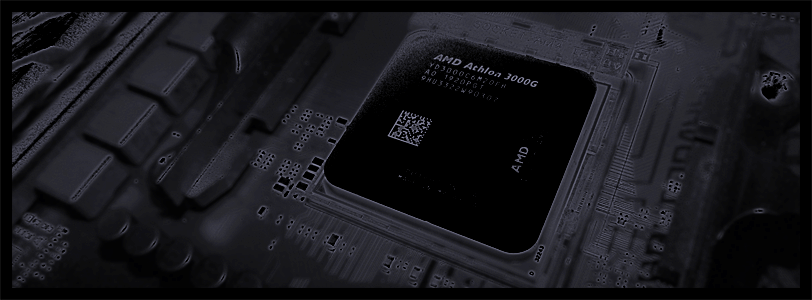

Introduction
We are exploring the performance of the AMD Athlon 3000G APU and its integrated Vega 3 graphics. The AMD Athlon 3000G is a dual-core APU at 3.5 GHz with integrated Vega 3 graphics iGPU at 1100MHz. In our previous performance review, we dove into the CPU performance of the AMD Athlon 3000G on an AMD B450 motherboard. We even overclocked the CPU and showed how well it can overclock. Our comparison was a Laptop with an AMD Ryzen 5 3500U APU, which is based on the same architecture as the 3000G APU.
Now it is time to look at the gaming performance the Vega 3 graphics integrated into this APU allow on the 3000G. To make the same comparison we will continue to use our Lenovo Laptop with the AMD Ryzen 3500U which contains Vega 8 graphics. Though this is a higher model, the Vega 8 in the laptop will be constrained by TDP and memory bandwidth. The desktop AMD Athlon 3000G actually has a big memory bandwidth advantage compared to the laptop.
AMD Athlon 3000G Vega 3 Graphics
Let’s take a look at what makes a Vega 3 integrated iGPU in the 3000G tick. As we would imagine AMD Radeon RX Vega 3 is positioned to be used in entry-level APUs and laptop APUs. The GPU itself is based on the Vega architecture (5th Generation GCN) architecture at 14 nm. The Vega 3 graphics fully support DirectX 12 feature level 12_1 and Vulkan APIs.
The GPU consists of 3 CUs which give it 192 shaders also called stream processors. There are 4 ROPs and 12 TMUs. The clock speed runs at 1100MHz (1.1GHz) by default. What will make or break performance the speed of the RAM as the system RAM is tied to the iGPU. The iGPU can support DDR4-2400 dual-channel RAM officially, but with a good motherboard like AMD’s B450 chipset, it can run at DDR4-3200 and even DDR4-3333 for improved memory bandwidth. On our system running DDR4-3200MHz, the memory bandwidth is 51.2GB/s for the iGPU.
Oh yeah, and on the AMD Athlon 3000G desktop CPU with a B450 motherboard, you can easily overclock the iGPU from within the BIOS! Therefore, we will test overclocking and performance with Vega 3 overclocked.
AMD Ryzen 5 3500U Vega 8
To have something to compare with, we are going to include our Lenovo laptop with the AMD Ryzen 5 3500U with Vega 8 graphics. The Vega 8 integrated graphics on the AMD Ryzen 5 3500U is based on AMD’s 14nm Picasso iGPU. However, the base architecture is still GCN 5th Generation Vega graphics, same as the Vega 3 in the Athlon 3000G. They both use the same architecture.
Vega 8 graphics has 512 shaders, 8 ROPs and 32 TMUs. It runs up to 1200MHz and has a TDP of 15W. Memory is shared with system memory and therefore runs at the laptop’s memory frequency and bandwidth, which in our case is DDR4-2400 giving us 38GB/s of bandwidth. Therefore, we are constrained by overall TDP and memory frequency compared to the desktop Vega 3 iGPU.
| Vega 3 (3000G) | Vega 8 (3500U) | |
| CU’s | 3 | 8 |
| Shaders | 192 | 512 |
| ROPs | 4 | 8 |
| TMUs | 12 | 32 |
| GPU Clock | 1100MHz | 1200MHz |
| Bus Width | 128-bit | 128-bit |
| Memory Type | DDR4 | DDR4 |
| Memory Frequency | 3200MHz | 2400MHz |
| Bandwidth | 51.2GB/s | 38.4GB/s |
| APU TDP | 35W | 15W |
